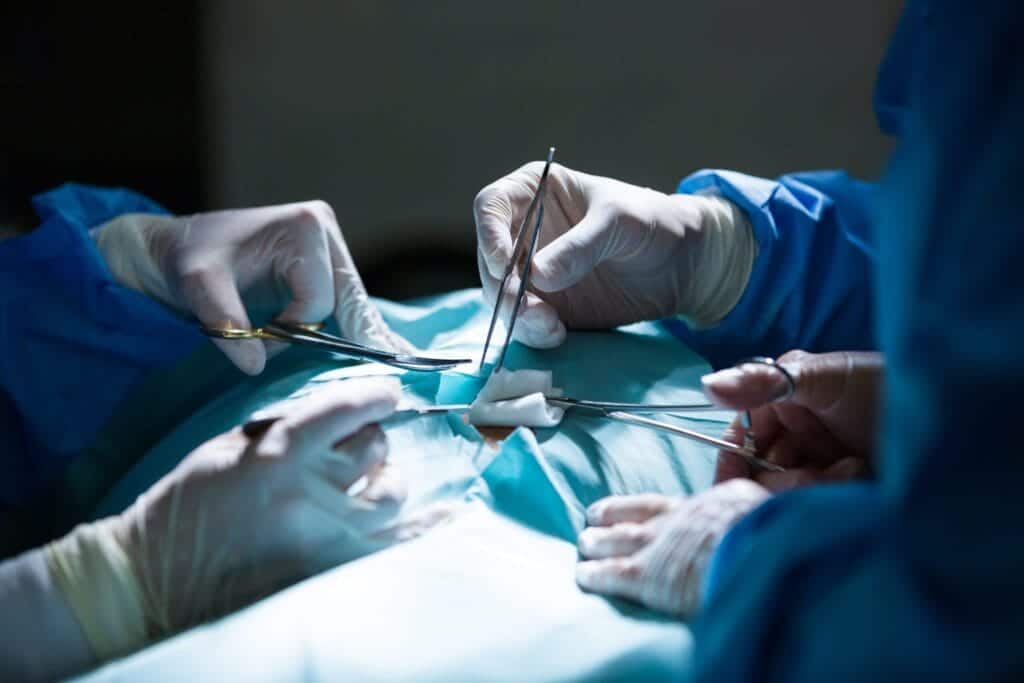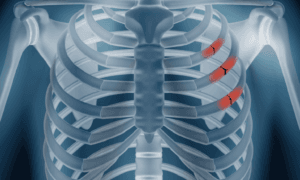Pneumothorax, or a collapsed lung, is a condition that occurs when air leaks into the space between the lung and chest wall, causing the lung to partially or completely collapse. While some cases resolve with minimal intervention, others require surgery to restore proper lung function and prevent complications. This blog post explores when surgery becomes necessary in treating pneumothorax, the types of surgical options available, and why expert care from a thoracic specialist like Dr. Marco Scarci can be life-changing for patients facing this condition.
Understanding Pneumothorax and Its Causes
Pneumothorax can be classified into different types based on its cause:
- Primary Spontaneous Pneumothorax (PSP): Occurs without any obvious cause, often in young, thin individuals. PSP may happen due to small air pockets (blebs) that rupture.
- Secondary Spontaneous Pneumothorax (SSP): Develops as a result of an underlying lung disease, such as COPD, cystic fibrosis, or lung cancer. SSP is often more severe and may require more intensive treatment.
- Traumatic Pneumothorax: Caused by physical trauma to the chest, such as a car accident, rib fracture, or penetrating injury.
- Tension Pneumothorax: A severe form of pneumothorax where the air in the pleural space cannot escape, creating pressure that can lead to serious complications for the heart and other organs. This is a medical emergency requiring immediate intervention.
When Is Surgery Necessary for Pneumothorax?
While mild cases of pneumothorax can resolve with conservative treatments, such as observation, oxygen therapy, or needle aspiration, surgery is often recommended in the following situations:
- Recurrent Pneumothorax
If a patient experiences repeated episodes of pneumothorax, surgery may be recommended to prevent further recurrences. Surgery can remove damaged areas of the lung or create an adhesion between the lung and chest wall, significantly reducing the chance of another collapse. - Persistent Air Leak
Sometimes, air continues to leak from the lung despite initial treatments like chest tube placement. In these cases, surgery is necessary to close the leak and ensure proper lung re-expansion. - Severe or Large Pneumothorax
If the pneumothorax is large or causing significant breathing difficulties, surgery may be the most effective way to treat the condition and avoid complications. - Underlying Lung Conditions
In patients with SSP due to existing lung disease, surgery may be required to address both the pneumothorax and the underlying condition, such as removing diseased lung tissue or repairing weakened areas. - Tension Pneumothorax
Although initial treatment involves releasing the trapped air through needle decompression or chest tube insertion, surgery may be necessary afterward to prevent recurrence or address underlying damage.
Types of Pneumothorax Surgeries
Several surgical procedures are available to treat pneumothorax, each tailored to the patient’s condition and severity of lung collapse:
- Video-Assisted Thoracoscopic Surgery (VATS)
VATS is a minimally invasive technique that uses a small camera and specialized instruments to access the pleural space. This method is often preferred due to its shorter recovery time, reduced pain, and smaller incisions compared to traditional open surgery. VATS allows surgeons to remove damaged lung areas, repair air leaks, and perform pleurodesis (a procedure to adhere the lung to the chest wall). - Thoracotomy (Open Surgery)
In more complex or severe cases, a thoracotomy may be necessary. This open-chest surgery provides direct access to the lungs and pleural space, allowing the surgeon to address extensive damage or perform complex repairs. Thoracotomy requires a longer recovery time but is sometimes essential for more complicated cases. - Pleurodesis
This procedure involves creating a scar that adheres the lung to the chest wall to prevent future pneumothorax. Pleurodesis can be performed using chemical agents or mechanically during VATS. It is particularly useful for patients who experience recurrent pneumothorax. - Blebs or Bullae Resection
In cases of spontaneous pneumothorax due to ruptured blebs (small air pockets) or bullae (larger air pockets), these weakened areas of the lung can be removed to prevent further air leaks and reduce the likelihood of recurrence.
What to Expect During Recovery
Recovery from pneumothorax surgery varies based on the type of procedure performed:
- Hospital Stay: Patients usually stay in the hospital for a few days following surgery for monitoring and pain management.
- Pain Management: Pain control is an essential part of recovery, especially after thoracotomy, and medications are provided to ensure comfort.
- Breathing Exercises: Respiratory therapy, including deep breathing exercises, helps re-expand the lung and improve lung capacity. Patients may be advised to perform these exercises regularly during recovery.
- Follow-Up Care: Regular check-ups with the surgeon help monitor healing and check for any signs of recurrence. Imaging, such as chest X-rays, may be used to confirm lung expansion.
- Returning to Normal Activities: Patients are generally advised to avoid strenuous activities and heavy lifting for several weeks post-surgery to allow the chest to heal fully.
Why Choosing an Expert Matters
For patients facing pneumothorax surgery, having a skilled thoracic surgeon is critical. Dr. Marco Scarci, an experienced thoracic surgeon, is known for his expertise in minimally invasive procedures and personalized patient care. With a deep understanding of pneumothorax treatment and years of experience in complex lung surgeries, Dr. Marco Scarci is committed to helping patients achieve the best possible outcomes.
Take the Next Step Toward Lung Health
If you or a loved one has been diagnosed with pneumothorax, it’s essential to get the best care to ensure a full recovery and prevent future episodes. Dr. Marco Scarci’s practice offers cutting-edge techniques and compassionate support, guiding you every step of the way.
Treating Pneumothorax Treating Pneumothorax Treating Pneumothorax Treating Pneumothorax Treating Pneumothorax Treating Pneumothorax Treating Pneumothorax Treating Pneumothorax Treating Pneumothorax









